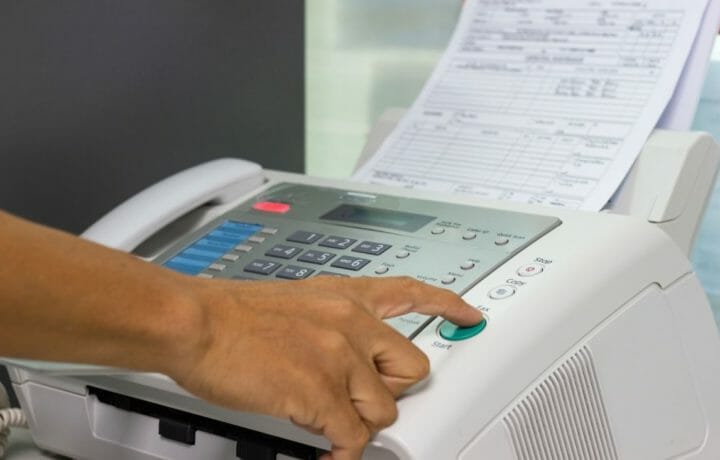The days of sending and receiving faxes at the CIA are coming to an end. The last classified fax machines of the CIA are set to be retired and will be replaced by a special email network known as Gray Magic.
“Our communications with industry, at the classified level, is through secure fax machines,” Margaret Augustine, the CIA’s procurement executive, said during an Intelligence and National Security Alliance virtual event earlier this month. “In this day and age, embarrassingly, we probably would see fax machines in the Smithsonian.”
Augustine wasn’t exactly wrong – fax machines are a bit of an anachronism in most office settings. The technology that led to the modern fax even predates the founding of the CIA by about a century. The first “mechanical fax” was invented by Alexander Bain in 1843, while scientists at AT&T that developed the technology to send photos by telephone/wire transmission in the 1920s. Radio Corporation of America (RCA) developed its own TransOceanic Radio Facsimile, which successfully transmitted photos between London and New York. It took upwards of six minutes to send a single page.
It wasn’t until the 1960s that the first commercialized versions of the modern fax machines were developed by Xerox Corporation, and even in the 1970s, basic machines sold for upwards of $20,000 while it still took more than three minutes to send a page. Before email, fax remained the most effective way to share documents over great distances.
CIA Slowly Adapting
The CIA hasn’t been alone in maintaining the fax machine however. Many government agencies as well as many law firms have relied on fax machines even as the rest of the world has moved on to email, largely because fax has remained the easiest way to share documents.
The technology still might have seemed out of place at the most famous of American’s intelligence agencies in the 21st century.
“We can have so much fun cracking jokes about how slow the government is in the technology learning curve,” quipped telecommunications analyst Jeff Kagan.
Yet, for the CIA, and other agencies in the intelligence community, fax machines have continued to be used to share secret information with private contractors.
“The system worked; it was the point to point, so relatively secure,” explained technology industry analyst Rob Enderle of the Enderle Group.
“It couldn’t spread viruses – though it could be used for phishing attacks – and it was relatively easier to use than scanning a document, creating an attachment, and sending it in email,” Enderle told ClearanceJobs. “It just worked, and it is often tough to replace something that does the job folks want to be done.”
Fax hasn’t always been perfect. For one you couldn’t ensure that someone actually received the document you sent and it also wasn’t encrypted.
“Fax lacked capabilities necessary for compliance like tracking or data protection resulting in breaches,” warned Enderle. “Thus it has finally outlived its usefulness, at least in those areas where compliance is essential – like government agencies.”
The new email system promises to make collaboration more expeditious, and it also could make the sharing of communications more direct. While movies and TV shows may suggest that the CIA and other intelligence agencies are filled with high-tech gizmos and gadgets, the truth is that something like the fax just worked well – at least until it didn’t.
“It is often really hard to replace something as long as users view it as ‘good enough,'” said Enderle, adding that its time has come. “Fax machines are finally not good enough for compliance.”
Why Did the Fax Last so Long?
The CIA is actually making progress to utilize more “updated” or “modern” technology, and in 2013 adopted a version of Amazon Web Services cloud as the result of a 2013 acquisition move. The intelligence community (IC) as a whole has treaded carefully, largely because many of the new technologies – from robotics to artificial intelligence and blockchain to the Internet of Things – are coming not from the military and IC but from civilian companies. This has the potential to create data breaches and even lead to backdoor threats.
However, the IC can’t afford to be left behind, which is why technology such as the fax machine has endured for so long.
“When it comes to the government, old technology takes forever to be weeded out,” said Kagan.
“Fax machines are one way to communicate however today there are many newer and more secure ways to do so,” he told ClearanceJobs. “Even if the government wanted to use fax technology they can still do it over the computer, not a fax machine. Today, state of the art technology allows us to conduct messaging with a higher degree of security and accuracy.”



